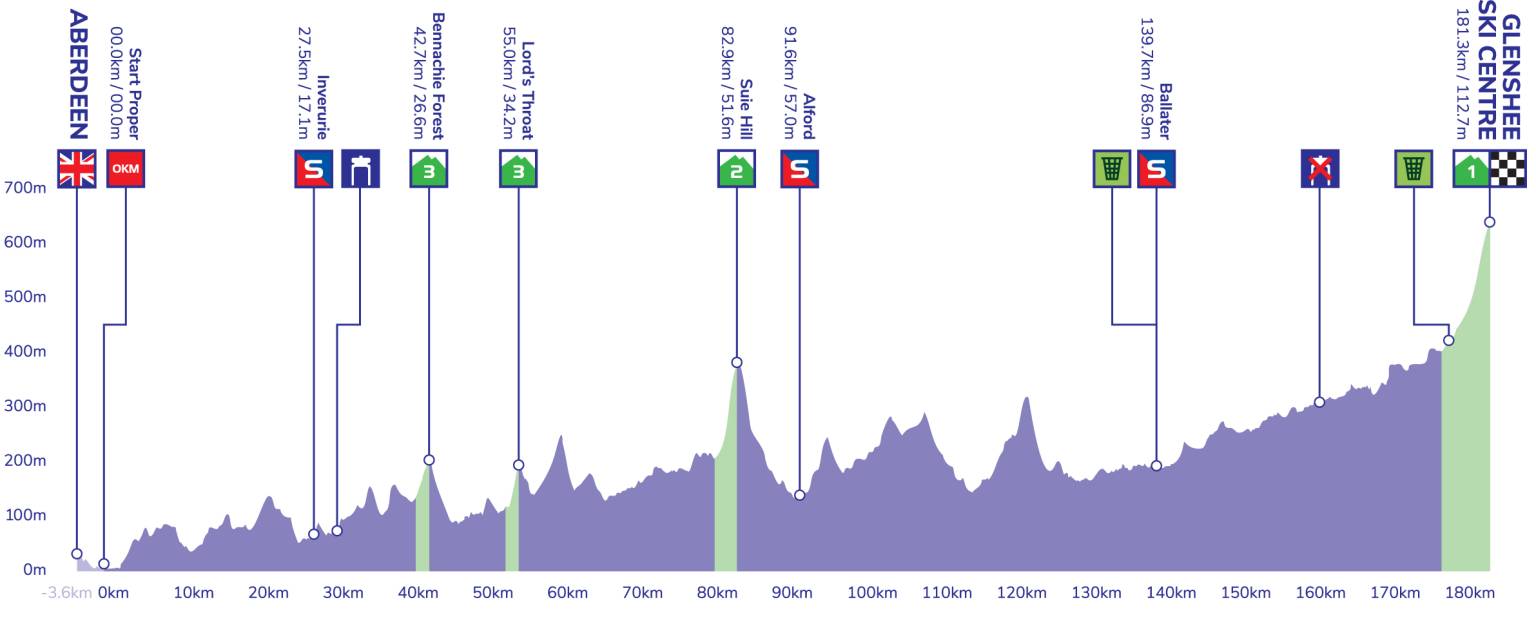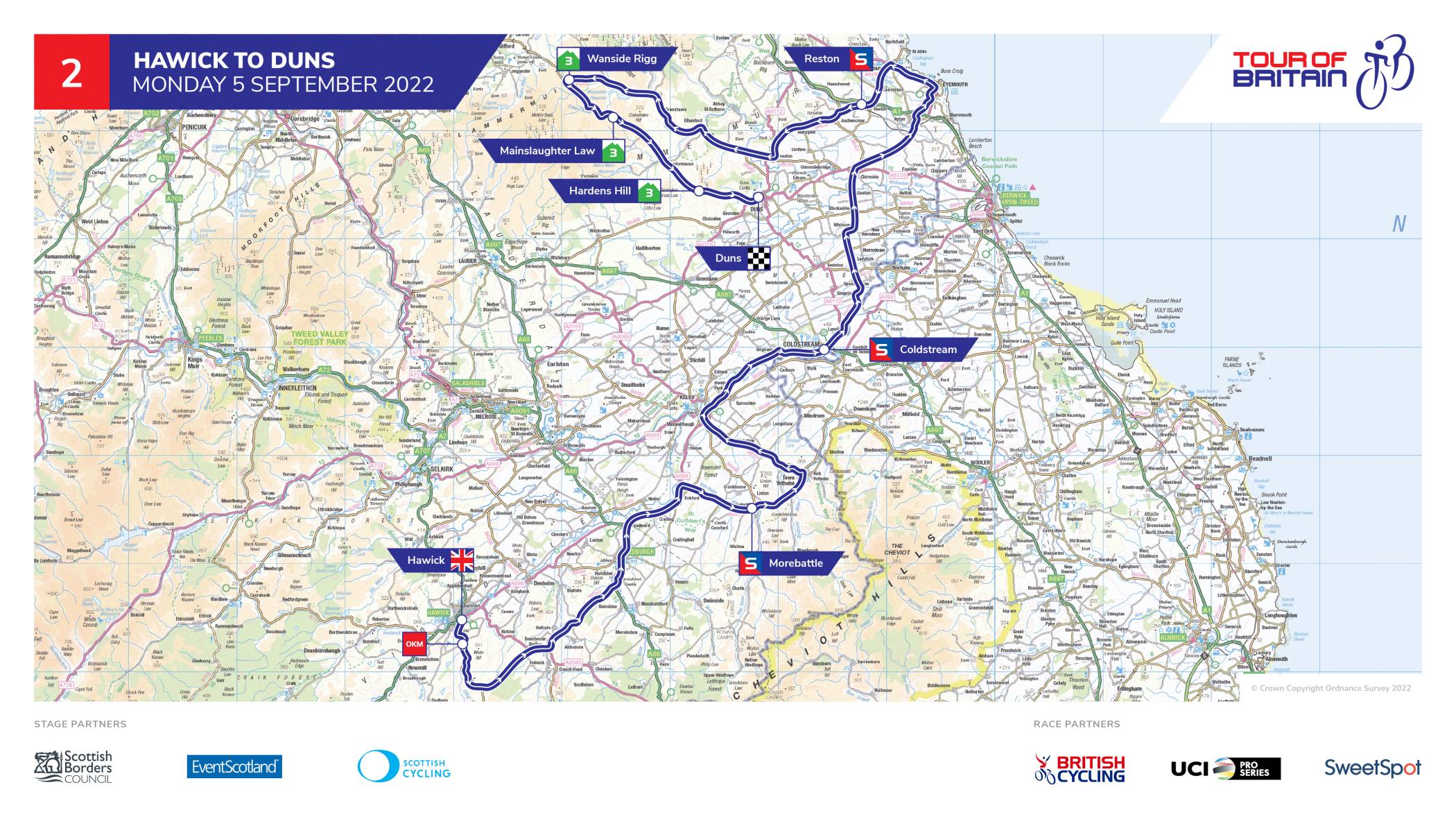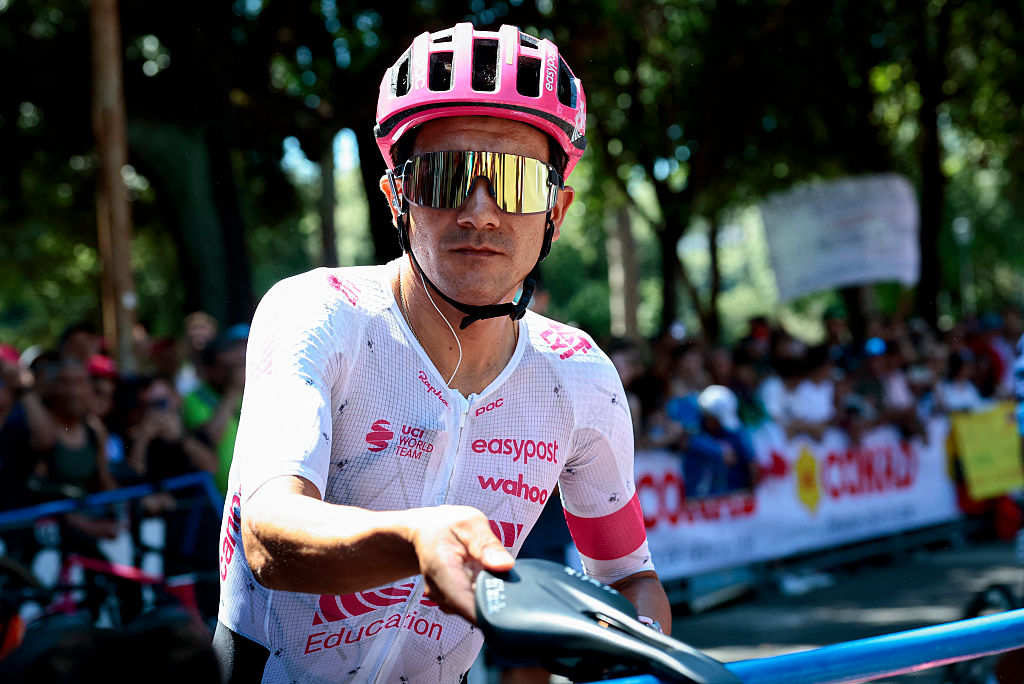Tour of Britain 2022 route
The 18th edition of the modern Tour of Britain set to take place between September 4 - 11

















The Tour of Britain returns September 4, after a one-year hiatus due to COVID-19, for eight days of racing as a UCI ProSeries event, making it one of the most prestigious sporting events of Great Britain.
Now in its 18th edition, 18 teams, five of them WorldTour level, will begin on the first Sunday of September in the city centre of Aberdeen and travel southward to the finale on September 11 in the historic Needles on the Isle of Wight.
First four days
Stage 1 opens in Scotland for 181.3 kilometres from Aberdeen, which is the most northerly overall start for the Tour of Britain. Last year Aberdeen hosted the race finale. It becomes the third Scottish city to host the start of the race, while Glenshee Ski Centre becomes the first-ever opening day summit finish. A trio of intermediate sprints and KOM climbs sprinkle the route to reach the approach to the final climb, which is uncategorised. To reach the finish line, the route will follow the 9.1km Old Military Road from Auchallater, facing an average gradient of 4.8% on the final five kilometres.
The second day of racing rolls south of Edinburgh across the rolling hills and rural areas of Scottish Borders, which hosts a full stage for the second time in three editions. From Hawick, the route will cover 175.2km to a first-time finish in Duns. The middle section of the route offers two intermediate sprints - Morebattle and Coldstream - as the roads skirt the North Sea at Eyemouth. Then the final intermediate sprint at Reston leads to a succession of three categorised climbs in the final 30 kilometres - Wanside Rigg (2.1km at 5.7%), Mainslaughter Law (1.7km at 5.9%) and Hardens Hill (1.9km at 4.7%). From the summit of Hardens Hill, the route descends 5.5km to the finish in Duns.
Stage 3 takes on 163.6km on English soil with a first-time start in Durham and winding in a counter-clockwise direction to Sunderland. The route heads west through the North Pennines AONB, with two categorised climbs in the area - first-category Chapel Fell (4.1km at 7.8%) followed by second-category Billy Lane (1.8km at 7.1%). There is one intermediate sprint in the opening 29km, at Stanhope, and then a pair on the road back toward Sunderland, Bishop Auckland and Ferryhill, only 9.5km between the two sprint points. A small category 3 climb at High Moorsley (1.2km at 5.3%) stands in the way to the fast finish outside Sunderland’s new City Hall.
Just a short distance south on the coast will be the start for stage 4 at Redcar, an inaugural host borough. The149.5km route goes through the popular sea-side town of Whitby, which will stage the first intermediate sprint of the day. Following are two short classified climbs at Robin Hood’s Bay and Egton Bank. Once through the next sprint line at Stokesley, with 33km to go, the route heads into the North York Moors National Park with two climbs, opening with the cat 1 Carlton Bank (1.9km at 10.2%). There next climb offers intermediate sprint points at the top, not KOM points, at Newgate Bank (1.3km at 7.3%). The final 85.km descent into Duncombe Park in Helmsley, one of Yorkshire’s finest estates.
Second four days
The longest day of the Tour of Britain is Thursday, September 8 on stage 5 with 186.8km in Nottinghamshire. Like the race did four years ago, the start will be in West Bridgford and the finish is set for the Civic Centre in Mansfield, but the route has changed. From West Bridgford, this year’s route takes in Cotgrave, Gedling, Southwell, Retford and Worksop before heading into Mansfield via Clumber Park and Sherwood Forest. It is a flat day with a trio of intermediate sprints - Edingley, Retford and Clumber Park - and two small classified climbs - at Keyworth (1km at 3.4%) and Sparken Hill (.4km at 8.5%).
All 170.9km on stage 6 roll through Gloucestershire, beginning in the mediaeval market town of Tewkesbury. Only 10km separate this town from the cathedral city of Gloucester, but the route takes the peloton in a clockwise direction into the Cotswolds. In the first 45km there are KOM points at round Hill (1.8km at 9.4%) and Withington Hill (1.5km at 6.9%). A trio of intermediate sprints unfold at Cirencester, Rangeworhty and Dursley before the final categorised climb at Crawley Hill (1.7km at 8.1%). The peloton will then have 25km to go and approach the finish by the historic Gloucester Docks, the country’s most inland port, from South Gloucestershire.
The race reaches the English Channel for stage 7, with a start in West Bay. The route run parallel with the West Dorset Heritage coast as it winds 175.9km on mainly inland roads towards Dorchester, Wareham and Knowlton, all with intermediate sprints. The classified climbs at Daggers Gate (1km at 3.1%) and Whiteways HIll (1.5km at 7.1%) strike as a tandem after the first 55km, the two separated by 8.5km. The final stiff climb comes with 46km to go at Okeford Hill (1.7km at 7.1%). The stage concludes with finishing circuits in Ferndown.
The Isle of Wight hosts the final day of racing, 148.9km from Ryde to The Needles. In between are a sequence of tourist towns - Sandown, Yarmouth and Cowes with intermediate sprints. Scattered among those are three classified climbs - Brading Down (1.9km at 5.8%), Cowleaze Hill (1.7km at 6.1%) and Zig Zag Road (1.4km at 6.3%).
The final 20 kilometres will take the peloton along Military Road, which offers stunning panoramic views out across the English Channel, towards The Needles Landmark Attraction. This year’s race culminates with a two-kilometre climb up to Tennyson Down, the final 400 metres averaging 9.6%, making it the toughest ending to any Tour of Britain in modern history.
Tour of Britain 2022 Route
- Stage 1 - Aberdeen to Glenshee Ski Centre, 181.3km
- Stage 2 - Hawick to Duns, 175.2km
- Stage 3 - Durham to Sunderland, 163.6km
- Stage 4 - Redcar to Duncombe Park, Helmsley, 149.5km
- Stage 5 - West Bridgford to Mansfield, 186.8km
- Stage 6 - Tewkesbury to Gloucester, 170.9km
- Stage 7 - West Bay to Ferndown, 175.9km
- Stage 8 - Ryde to The Needles, 148.9km
The latest race content, interviews, features, reviews and expert buying guides, direct to your inbox!
Cyclingnews is the world's leader in English-language coverage of professional cycling. Started in 1995 by University of Newcastle professor Bill Mitchell, the site was one of the first to provide breaking news and results over the internet in English. The site was purchased by Knapp Communications in 1999, and owner Gerard Knapp built it into the definitive voice of pro cycling. Since then, major publishing house Future PLC has owned the site and expanded it to include top features, news, results, photos and tech reporting. The site continues to be the most comprehensive and authoritative English voice in professional cycling.
Latest on Cyclingnews
-
Bahrain Victorious leader Santiago Buitrago to ‘try to get in the top 5, or even on the podium’ at the Tour de France
Team will also count on French climber Lenny Martinez and sprinter Phil Bauhaus -
Canadian Road National Championships: Derek Gee solos to first road race title
Hugo Houle second and Michael Leonard third in St. Georges -
Richard Carapaz out of Tour de France due to gastrointestinal infection
Illness developed while training at home in Ecuador -
‘A little pain in my arm and pelvis’ - Vittoria Guazzini following her violent crash into wall at Italian road race championships
ITT champion Guazzini reports ‘pain in arm and pelvis’



